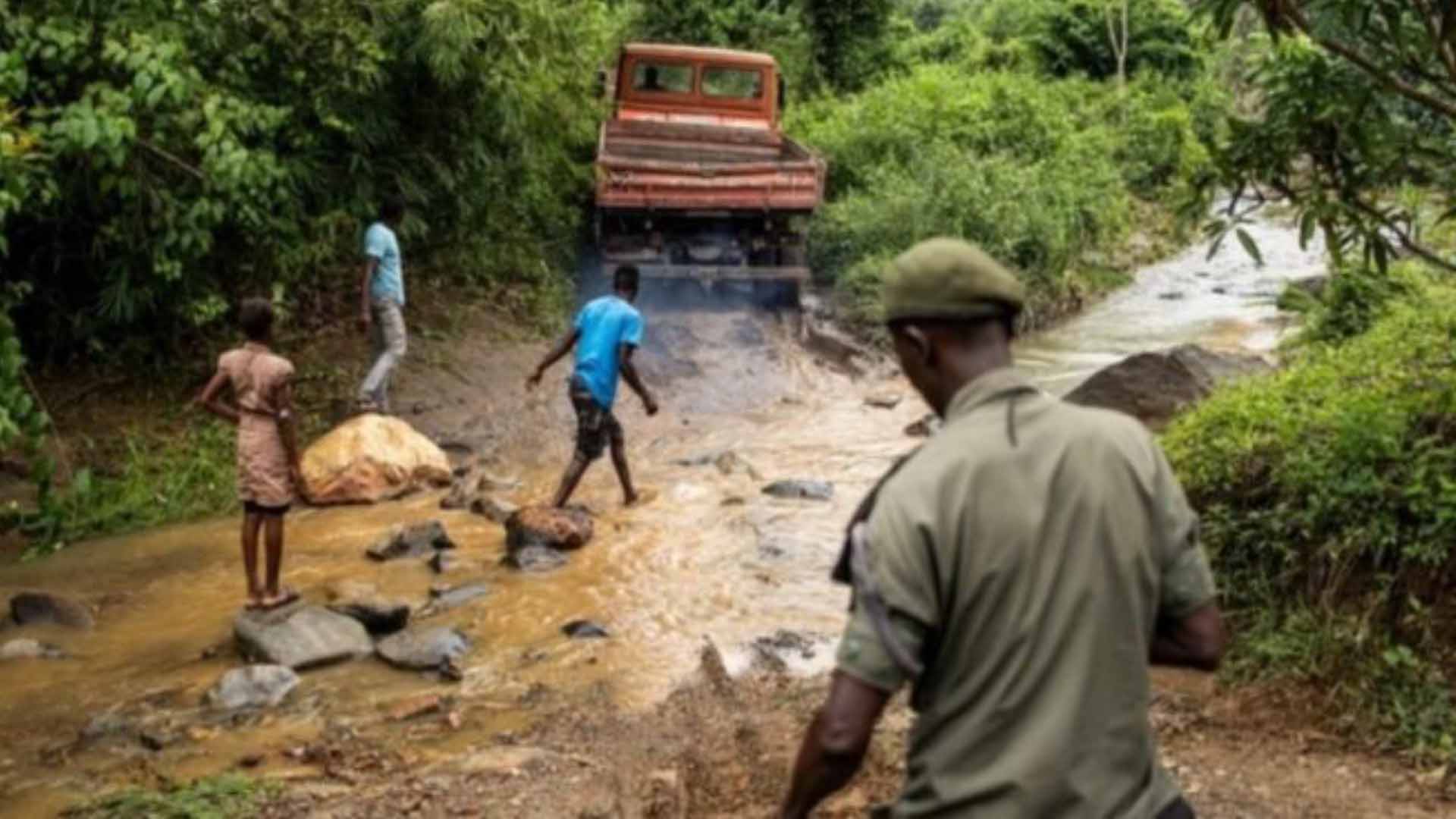Kambui Hills Forest Reserve lies in Sierra Leone’s Eastern Province, an area with large reserves of gold, rutile and diamonds.
As the rainclouds descend on Sierra Leone’s tropical Kambui forest, a handful of khaki-clad rangers assemble for their daily patrol in the fight to preserve the West African country’s dwindling wilderness.
The team are from the National Protected Area Authority (NPAA) and are tasked with guarding the rainforest from encroaching illegal mining and logging.
But with just 62 wardens to cover some 14,000 hectares (35,000 acres), it’s an arduous game of cat and mouse.
“The devastation is getting worse every day,” said Sheku Jusu, 36, the regional NPAA conservation officer.
“When we are patrolling in the forest, every day we come across new sites that they have just started operating.”
Jusu’s words became a reality no more than 30 minutes into the rangers’ ascent, when a pile of fresh sand on the riverbank indicated that mining had just taken place.
“This is very recent, this was an hour or two ago,” said Bockarie Kowa, 48, the NPAA regional coordinator.
“While we are sleeping, they come.”
By mid-morning it was already 27 degrees Celsius (80 Fahrenheit) with 96 percent humidity, and the group faced a long trek on unforgiving terrain.
Kambui Hills Forest Reserve lies in Sierra Leone’s Eastern Province – an area bordering Guinea and Liberia with large reserves of gold, rutile and diamonds.
It was the trade of so-called blood diamonds which largely financed the country’s brutal 11-year civil war, leaving some 120,000 people dead.
But along the rocky riverbanks of the Kambui Forest, the miners are predominantly searching for gold.
Mineral-rich Sierra Leone is one of the poorest countries in the world, with the rangers blaming economic hardship for the escalating exploitation of the natural landscape.
The scars of land excavation were evident along the patrol route, with orange earth and stones piled next to the occasional deep pit of an abandoned gold mine.
Rangers said that mining was causing trees to be uprooted, which were then being exploited by illegal loggers.
Midway through the patrol, a break in the dense tree cover gave way to a vast expanse littered with felled trees.
Sierra Leone has one of the highest deforestation rates in the world according to the Environmental Performance Index – put together by Yale and Columbia universities.
Since 2000, the country has lost more than 35 percent of its total tree cover and 14 percent of its humid primary forests – some of the world’s most ecologically significant habitats – according to Global Forest Watch, an online monitoring platform.
Credit: Aljazeera










